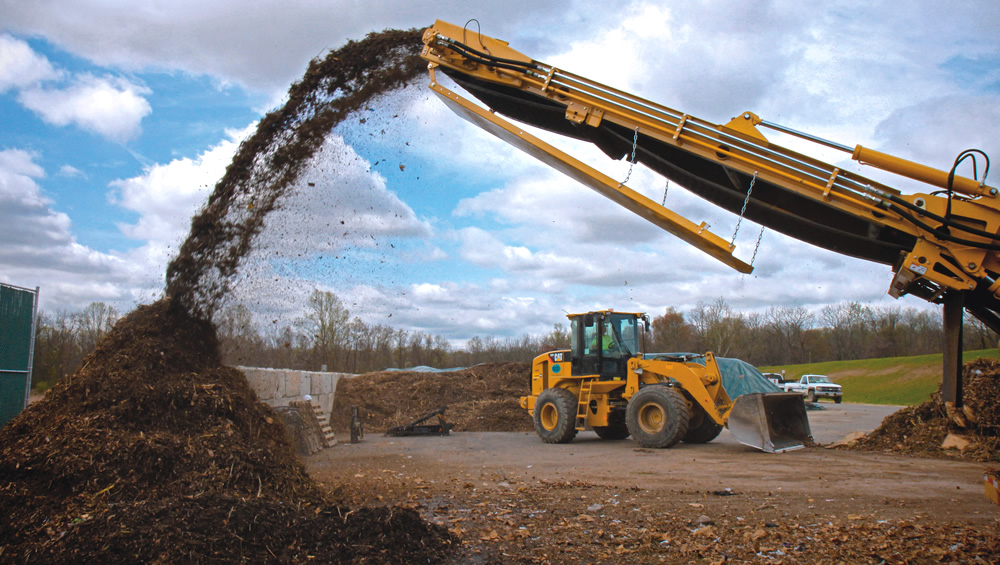Ron Alexander
Nine months in, 2014 has proven to be a great “bounce-back” year for producers of compost and other organic recycled products. Although the economy may not be perfect, “The Great Recession” is becoming a fading memory and wallets and pocketbooks are opening more freely again in order to complete long overdue landscape, turf and site improvement projects. This, as well as a series of new and continuing trends, has helped many compost manufacturers market their current production volumes.
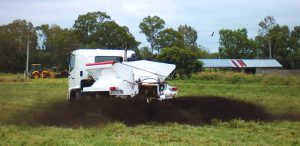
The soil blend market will continue to expand and get more crop and application specific. Photo courtesy of QORS Mark Neal Farm
1. Soil Management And Health
Use of compost in landscaping and agricultural applications continues to be the backbone of the compost marketplace. The product is popular in commercial (or professional) applications, as well as in retail (or homeowner) applications. And let’s not forget the incredible growth in the market for blended soils containing compost. The soil blend market will no doubt continue to expand, and get more crop and application specific. Educating the marketplace regarding the importance of soil health or overall quality is key to expanding the market for quality compost products — and mitigating a variety of environmental problems.
The United Nations has proclaimed 2015 as the “International Year of Soil.” The composting industry must promote soil health in order to not only feed the world, but also manage the environment and its resources.
2. Environmental Applications And Infrastructure
Some of the most popular and high value soil mixes containing compost are those created for storm water management, including roof top garden, rain garden, bioretention pond (etc.) media. Many composters have had great success entering this market, often assisted by regional specifications requiring these green infrastructure methods over grey ones. Often, compost manufacturers who have spent the time to educate themselves regarding the proper use of these green infrastructure technologies have flourished in the marketplace (as have those who assist in the promotion and implementation of the specifications themselves). Markets for compost used in erosion and sediment control applications have continued to expand on an annual basis. More and more state departments of transportation are using compost blankets and filter socks, and are obtaining excellent results.
That stated, the marketplace is still dominated by products that are less effective and/or sustainable in nature. The composing industry must continue to invest in educating specifiers, such as engineers and landscape architects, in order to continue expanding this market. Further, certain specifiers and buyers are having a difficult time locating erosion control grade composts, which are both coarse in nature, but free of inert contaminants. This must be rectified. The smarter our industry becomes about these high tech uses for compost — and the customized products they require — the faster the market for them will grow.
3. Climate Change And Water Conservation
The effects of climate change are greatly impacting the world around us, with temperature and precipitation patterns changing. The most pronounced things have been the effects of violent weather anomalies (e.g., hurricanes, tornadoes). However, what is just as concerning are the droughts and floods affecting our ability to produce food and live normal lives (especially in lower lying coastal cities). Perhaps some genius technology is going to save us from the impacts of a changing climate. In the meantime, we know that soil improvement (using a stable source of organic matter) can help mitigate and lessen some of the impacts. Simply, a movement to conserve and apply organic matter to the soil can both reduce irrigation requirements and improve storm water penetration, helping to reduce the impact of both drought and flood. The costs associated with storm water management are enormous. The composting industry needs to push for more research here, and assist in education.
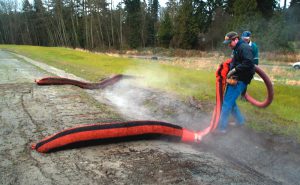
More and more state departments of transportation are using compost blankets and filter socks for erosion and sediment control and getting excellent results.
4. Specification
Through the work of many individuals in the composting industry, use of compost is being specified in large and important construction projects. These endeavors must be nurtured and expanded to ensure that compost markets continue to grow. Investment in educating the specifiers must be provided by individual composters, trade organizations and government entities. The educational process takes both patience and a technical background, as establishing trust and credibility is important to causing change. There is an excellent example of a successful landscape architect and engineer training program in the San Francisco Bay area that is funded by the City of San Jose, Z-Best and Republic Services. The program focuses on educating the specifiers about compost usage and actually assisting them in modifying their standard project specifications.
5. Registration
Composters are also more frequently having their products appropriately registered for sale through state departments of agriculture as soil amendments and fertilizers in the states in which they are marketed. This is important as it gives composters and their advocates a greater voice in a regulatory venue that directly affects them but has been dominated by the chemical fertilizer industry. These state officials are part of a national group, the American Association of Plant Food Control Officials (AAPFCO), which establishes labeling standards and guidelines that impact the compost marketplace. The US Composting Council has been involved in AAPFCO for well over a decade, helping to shape policies that impact compost manufacturers.
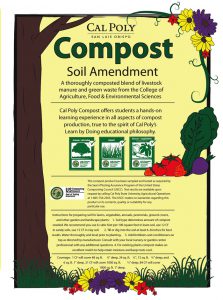
Compost producers feature certifications, as well as compost use instructions, directly on their bagged products.
6. Certification
More and more composters are listing their products through OMRI (the Organic Materials Review Institute), allowing for usage of their composts in certified organic farm production. Similarly, more composters are participating in the USCC’s Seal of Testing Assurance (STA) Program. Most state departments of transportation and many landscape architects and engineers require that the composts they specify be enrolled in the STA program. Interestingly, the increase in compost products being OMRI-listed is not only in response to the growth in the organic farming industry, but is also being demanded by retail buyers (and therefore, retailers).
7. Food Waste And Contamination
There is growing momentum to recycle and compost food waste. More states are banning the landfilling of these materials as they have higher potential uses, and are major methane generators when placed in the landfill. This is incredibly exciting for both the composting and anaerobic digestion (AD) industries, but it will require vigilance in terms of compost quality. Aside from investing in separation and screening equipment, the composting (and AD) industry must dedicate itself to training generators and collectors of food waste to reduce the level of physical contamination. We have all heard the saying, “garbage in, garbage out.” Well, this is not only a computer industry saying, but a composting industry one too. To state the obvious, the marketplace, especially the large higher value markets, will not accept compost products contaminated with man-made inerts (e.g., film and hard plastics, glass, etc.). Most customers “buy with their eyes.” So, even if inert contamination doesn’t affect the overall efficacy of the compost, many customers will not purchase a contaminated product.
8. Compost Specifications And Contaminants
Aside from education to keep physical contaminants out of our feedstock, as well as improved screening and depackaging technologies, these materials must be better managed at composting sites. Although more complicated at times, composters must consider segregating dirty feedstocks from clean ones, perhaps producing different grades of compost at the same site. It must be noted that the Departments of Transportation in California, Oregon and Washington — three states with multiple food waste composting programs — have all reduced the allowable content of inert contamination in compost (to 0.5%, by dry weight). This is in response to receiving “dirty” compost on project sites.
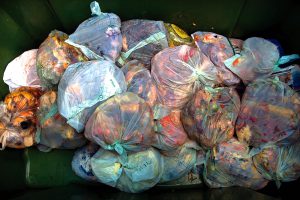
Under the U.S. Department of Agriculture’s National Organic Program requirements, compost containing compostable products, including bags, are still not allowed in certified organic agriculture production.
9. Compostable Packaging
Some states are banning use of plastic bags in grocery stores, while others are taxing their usage. Anything that reduces film plastic from making its way to a composting facility is helpful, as it is costly to remove (manage) and is unacceptable in the finished product. The use of biodegradable compostable products appears to be expanding along with the collection of food waste. Composting biodegradable bags along with food waste (and yard trimmings) is still not allowed by the NOP (National Organics Program). So if you hope to have the resultant compost allowed for organic farm usage, these bags must be separated before composting ensues.
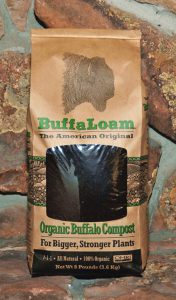
More creative packaging is being used to market compost in smaller consumer volumes, (e.g., 5 lb to 10 lb bags). Greater oversight by state fertilizer officials on labeling language is leading compost marketers to be conservative in their product claims.
10. Creative Packaging And Blends
More creative packaging is being used to market compost, both in smaller consumer volumes (5-10 lbs), as well as in bulk bags or Super Sacks (1-2 cy). All of these packaging methods are important in meeting the demands of customers and developing niche markets for compost products. More compost products that contain beneficial microbes, humic acid, worm castings, biochar and manure fiber (from anaerobic digestion) are making their way to the marketplace. However, we are also seeing greater oversight when it comes to labeling language, which is forcing the industry to be overly conservative when it comes to making product claims.
Marketplace Threats
There are still many threats to growth of the compost marketplace, so the composting and organics recycling industries must work together to resolve them. Overzealous phosphorous reduction regulations (which may be counterproductive and do not consider reduced mobility of certain forms of phosphorous), persistent herbicides and policies promoting the burning of carbon (instead of putting it in the ground to improve soil quality), are all things that we as an industry must unite around addressing. Compost producers and advocates must work individually and collectively in supporting state and national organizations to ensure that elected officials understand the positive benefits that a thriving composting and organics recycling industry can have on the economy and the environment. This collective call for action encompasses the composting, anaerobic digestion, vermicomposting, biosolids and manure management industries.
Despite these challenges, 2014 continues to be a good year for composting and compost use. Remember, producing a high quality product, studying the market, then putting forth the proper effort will lead to positive market growth for any compost manufacturer. Focus on researching the marketplace, then … plan the work, then … work the plan.
Ron Alexander is president of R. Alexander Associates, Inc. (Apex, North Carolina, 919-367-8350, www.alexassoc.net), a company specializing in product development and end use for organic recycled products. Alexander is the author of “The Practical Guide to Compost Marketing and Sales” (2nd Edition published by BioCycle) and has over 30 years of experience in compost marketing. He is cochair of the US Composting Council’s Market Development Committee, is a current USCC Board member, and an Industry Liaison to AAPFCO (Association of American Plant Food Control Officials).


